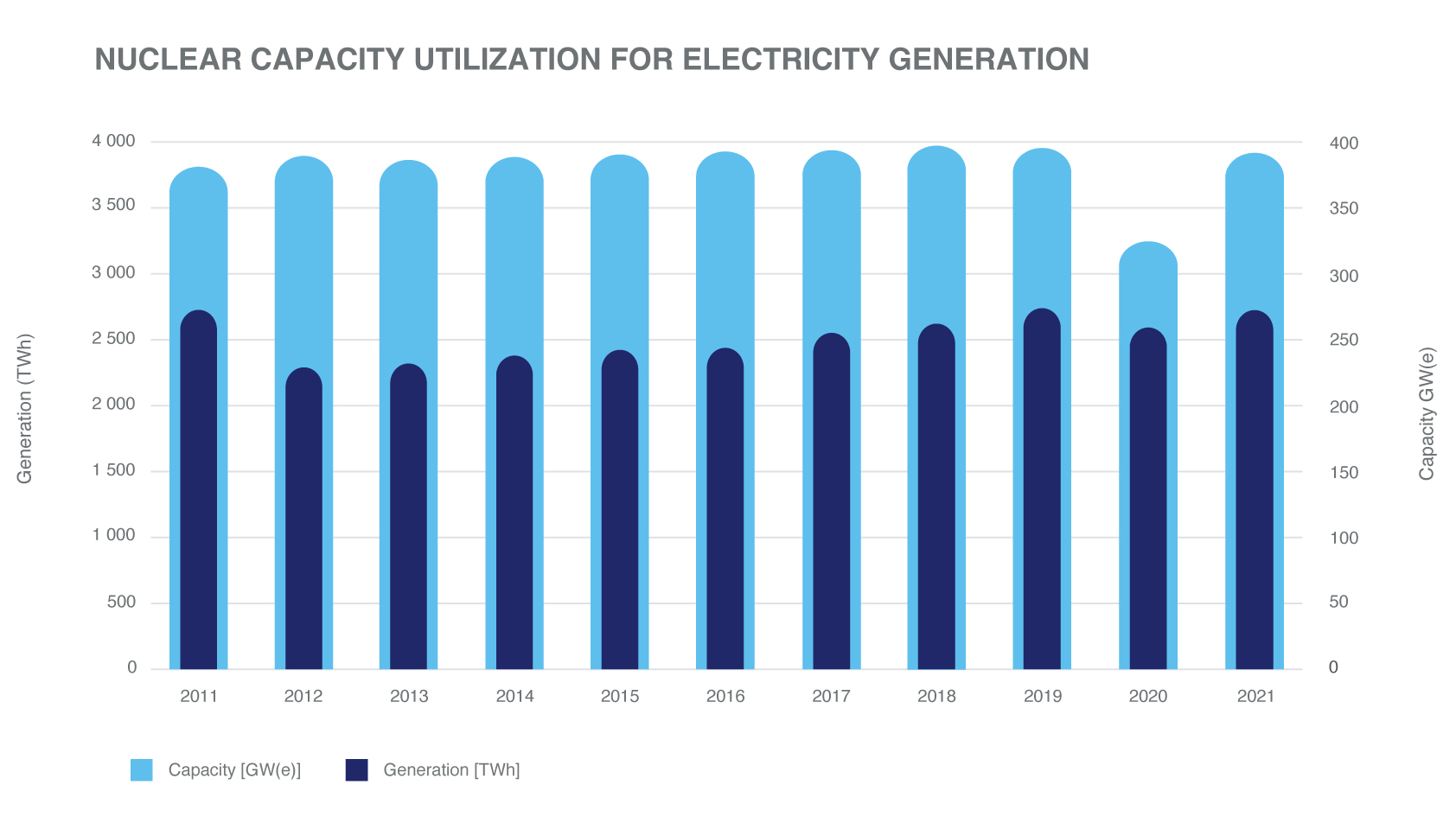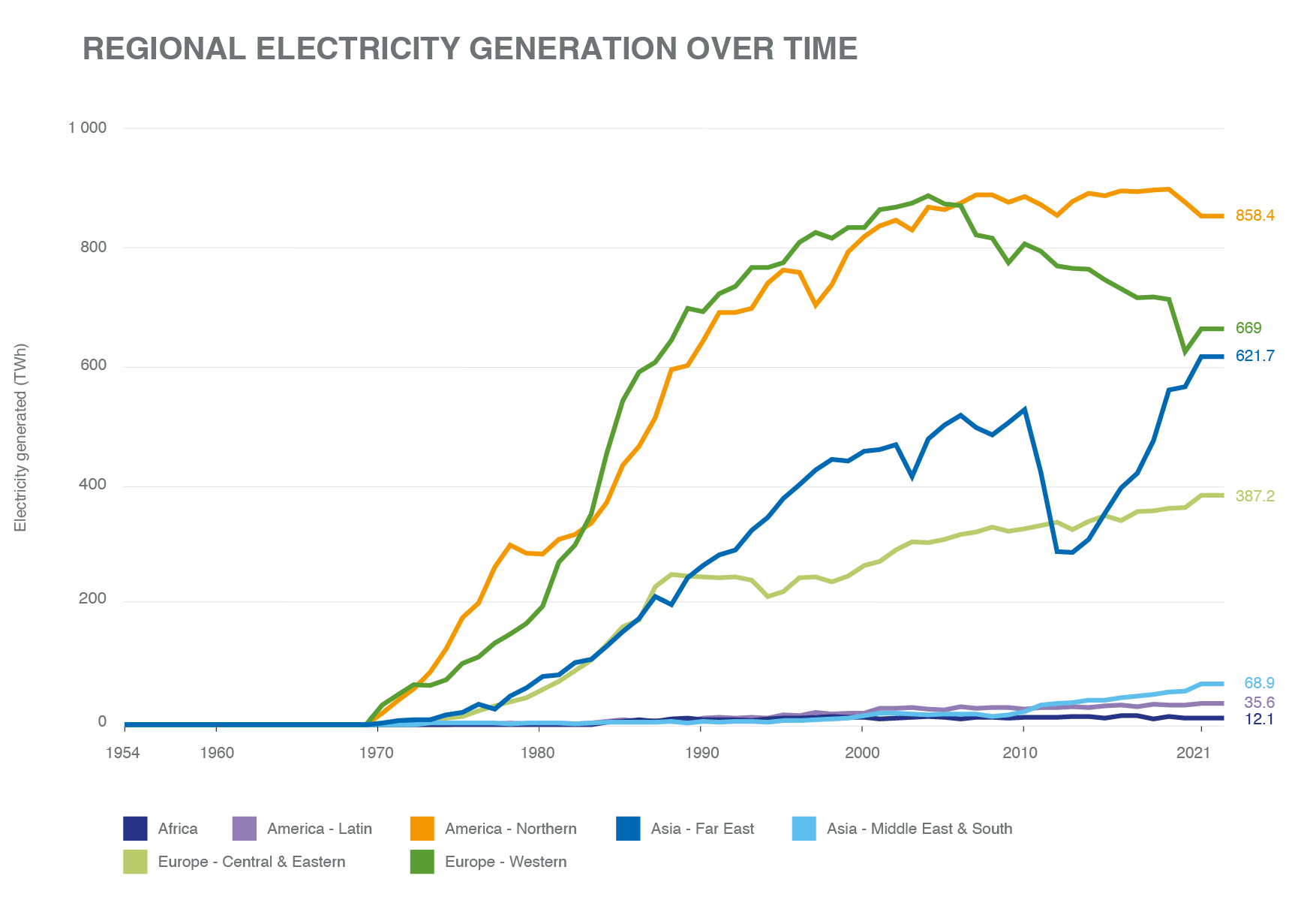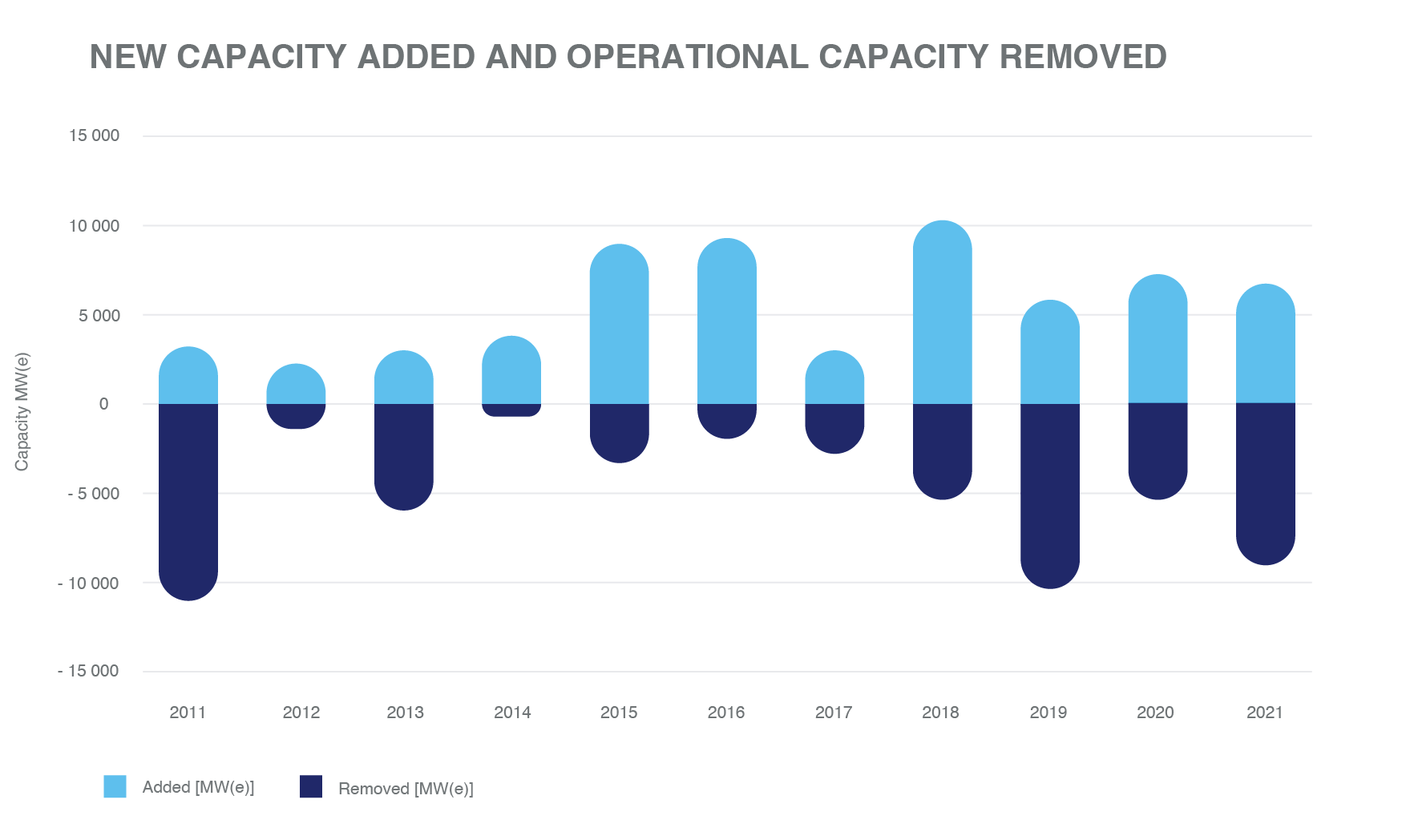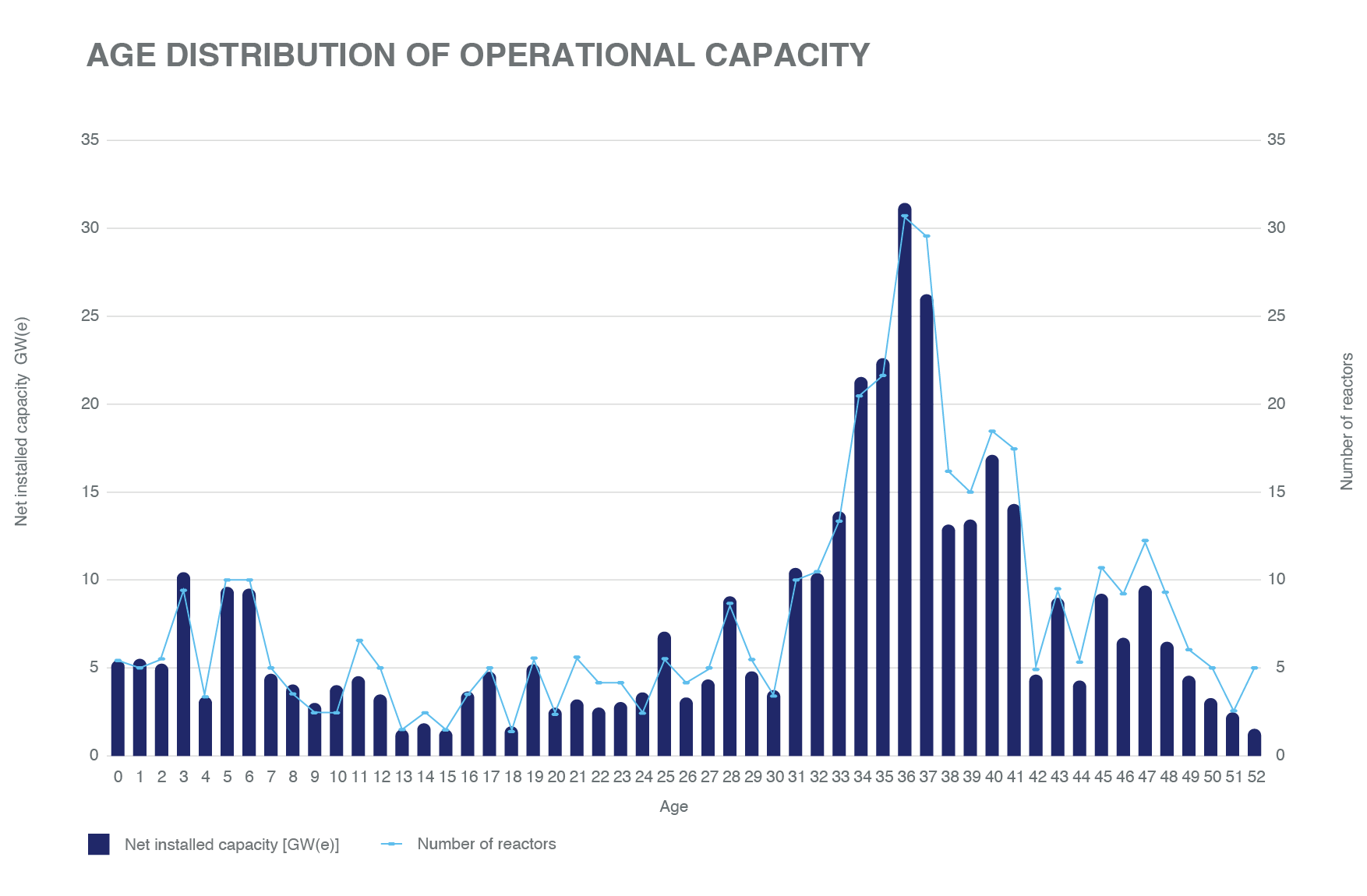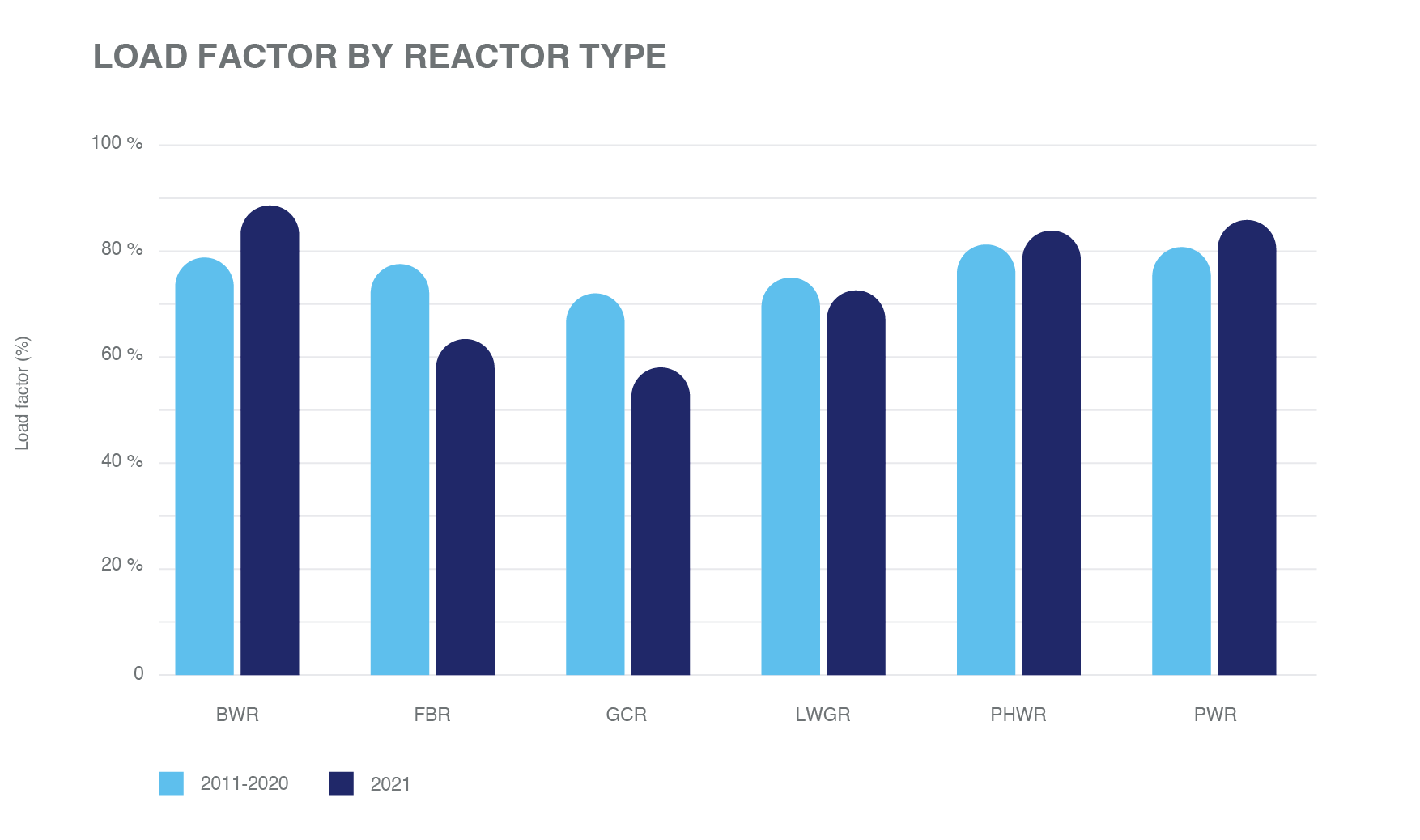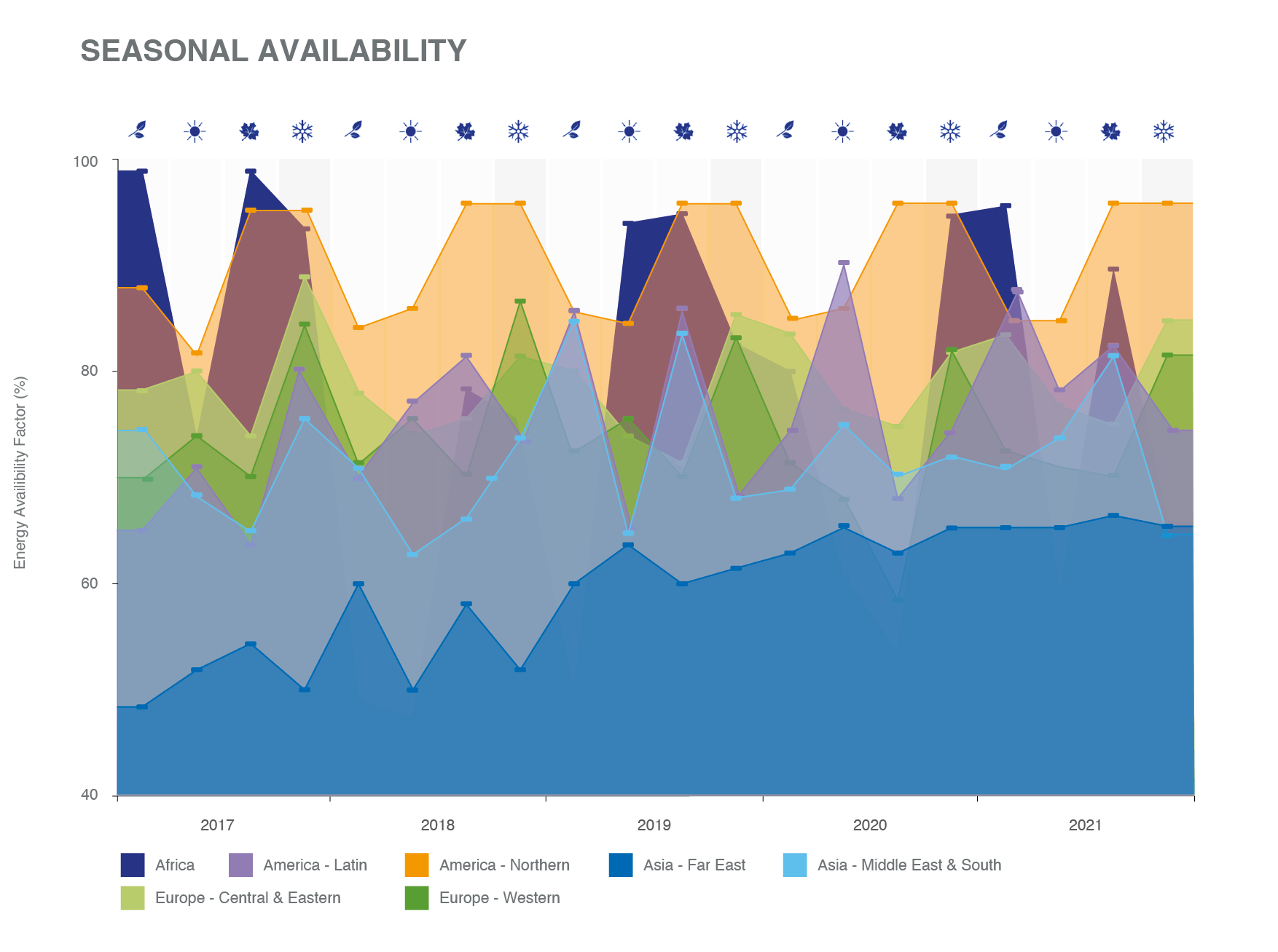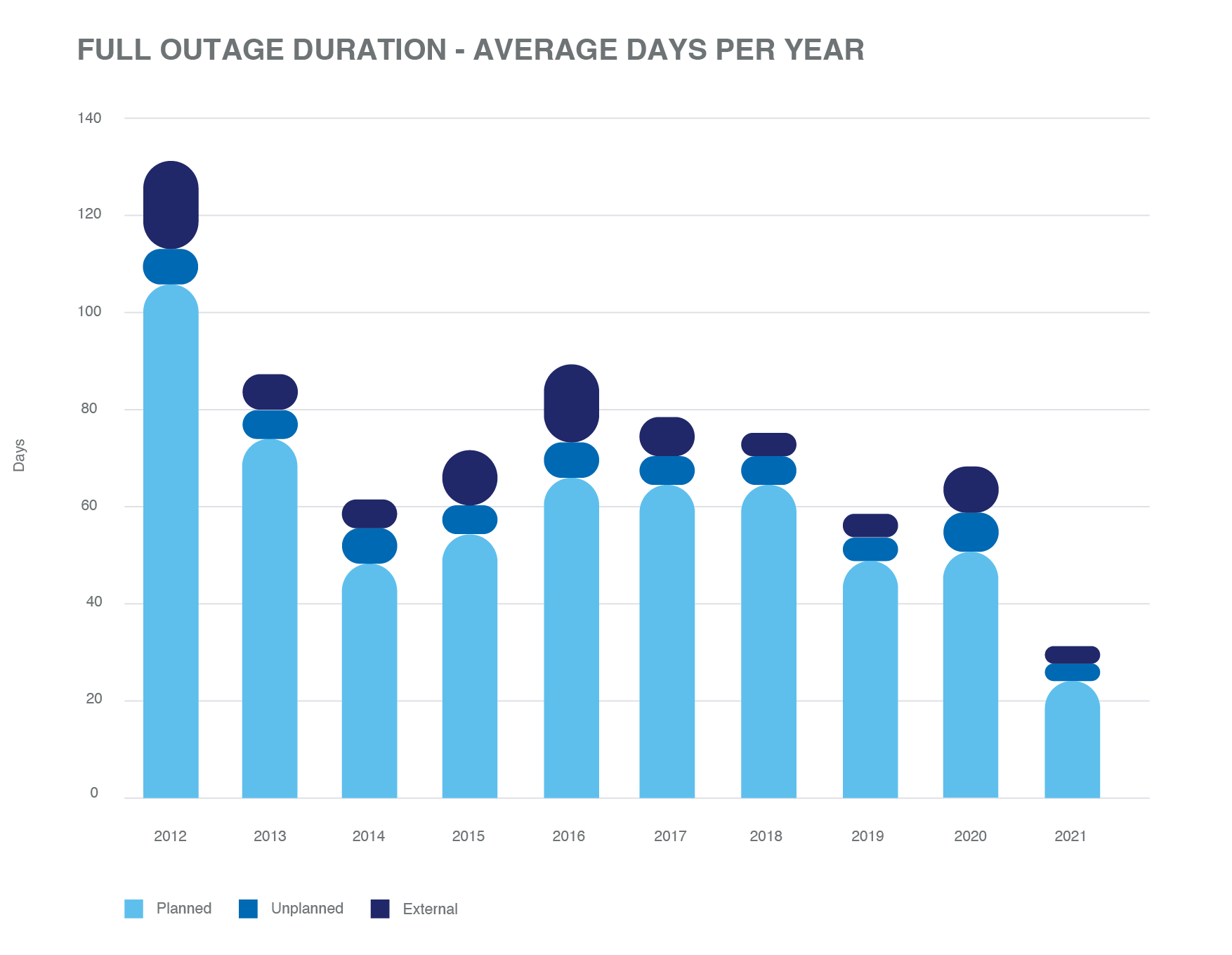Capacity removed and permanent shutdowns. During 2021, 8.7 GW(e) (10 reactors) of nuclear capacity was permanently shut down. Some 5.1 GW(e) of that capacity loss came from three reactors in Germany—Brokdorf (PWR, (1410 MW(e)), Grohnde (PWR, 1360 MW(e)), Gundremmingen-C (BWR, 1288 MW(e)) and three reactors in the United Kingdom: Dungeness Gas-Cooled Reactor (GCR) units B-1 and B-2 (each one 545 MW(e)) and Hunterston B-1 (GCR, 490 MW(e)). Pakistan’s first power reactor, Kanupp-1 (PHWR, 985 MW(e)), connected to grid over 50 years ago, was retired and after 45 years of operations, Kursk-1 (LWGR, 925 MW(e)) in Russia was shut down, followed by Kuosheng-1 (BWR, 985 MW(e)) in Taiwan, China.
Operational reactor types. At the end of 2021, 89.9% of the operational nuclear power capacity was comprised of light water moderated and cooled reactor types; 6.2% were heavy water moderated and cooled reactor types; 1.9% were light water cooled and graphite moderated reactor types, 1.6% were gas cooled reactor types and 0.4% were liquid metal cooled fast reactors with a total capacity of 1.4 GW(e). During 2021 there was also the inclusion of Shidao Bay-1, China’s high-temperature reactor pebble-bed module that is part of a new generation of modular high-temperature gas-cooled reactors, with a total capacity of 200 MW(e).
Non-electric applications. In 2021, 61 nuclear power reactors in 10 countries applied 2167.2 GWh of electrical equivalent of heat to support non-electric applications of nuclear energy. Over 89% of the non-electric applications were utilized in Europe, where 40.6 GW(e) of nuclear power capacity (54 reactors) generated 3007.4 GWh of electrical equivalent of heat to support district heating and process heating. The remaining 11% was produced by 4.5 GW(e) (7 reactors) in Asia to generate 249 GWh of electrical equivalent of heat to support desalination and process heating.
Operational lifetime. At the end of 2021, the 67 years of worldwide cumulative operating experience amounted to over 19,170 reactor years, from 637 reactors with a total capacity of 485.4 GW(e) across 35 countries. Of this, 199 reactors with 95.8 GW(e) have been permanently shut down.
About 66% of total operational reactor capacity (257 GW(e), 289 reactors) has been in operation for over 30 years. Over 23% of global operating nuclear capacity (91.2 GW(e), 117 reactors) has been in service for over 40 years, while 1.9% of available capacity (7.3 GW(e), 13 reactors) been operated for over 50 years. The aging fleet highlights the need for new or uprated nuclear capacity to offset planned retirements and contribute to sustainability and global energy security and climate change objectives. Utilities, governments and other stakeholders are investing in long term operation and ageing management programmes for an increasing number of reactors to ensure sustainable operation and a smooth transition to new capacity.



